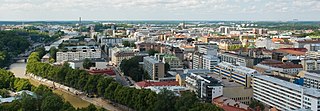
Turku is a city in Finland and the regional capital of Southwest Finland. It is located on the southwestern coast of the country at the mouth of the River Aura. The population of Turku is approximately 202,000, while the metropolitan area has a population of approximately 311,000. It is the 6th most populous municipality in Finland, and the third most populous urban area in the country after Helsinki and Tampere.

Lauri Allan Törni, later known as Larry Alan Thorne, was a Finnish-born soldier who fought under three flags: as a Finnish Army officer in the Winter War and the Continuation War ultimately gaining a rank of captain; as a Waffen-SS captain of the Finnish Volunteer Battalion of the Waffen-SS when he fought the Red Army on the Eastern Front in World War II; and as a United States Army Major when he served in the U.S. Army Special Forces in the Vietnam War.

Ilta-Sanomat is one of Finland's two prominent tabloid size evening newspapers and the second largest paper in the country. Its counterpart and biggest rival is Iltalehti.

Uusikaupunki is a town and municipality of Finland. It is located in the Southwest Finland region, 71 kilometres (44 mi) northwest of Turku and 97 kilometres (60 mi) south of Pori. The municipality has a population of 14,938 and covers an area of 551.65 square kilometres (212.99 sq mi) of which 49.04 km2 (18.93 sq mi) is inland water. The population density is 29.68 inhabitants per square kilometre (76.9/sq mi).

Heikki Johannes Kovalainen is a Finnish racing driver competing in the Japan Rally Championship for Rally Team AICELLO. He raced in Formula One between 2007 and 2013 for the Renault, McLaren, Team Lotus, Caterham and Lotus F1 teams, scoring a single victory at the 2008 Hungarian Grand Prix. After leaving Formula One, he raced in the Japanese Super GT series between 2015 and 2021, where he won the championship in 2016.
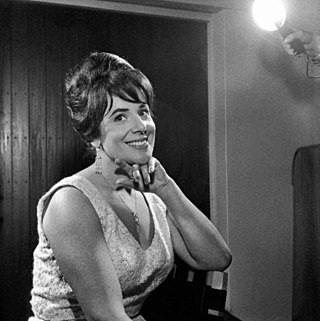
Tabe Maria Ingeborg Slioor was a Finnish socialite, reporter, and photojournalist, living and working in Europe and the United States.
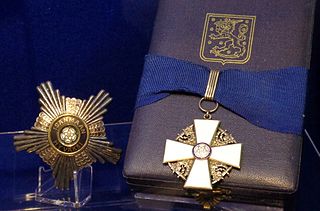
The Order of the White Rose of Finland is one of three official orders in Finland, along with the Order of the Cross of Liberty, and the Order of the Lion of Finland. The President of Finland is the Grand Master of all three orders. The orders are administered by boards consisting of a chancellor, a vice-chancellor and at least four members. The orders of the White Rose of Finland and the Lion of Finland have a joint board.
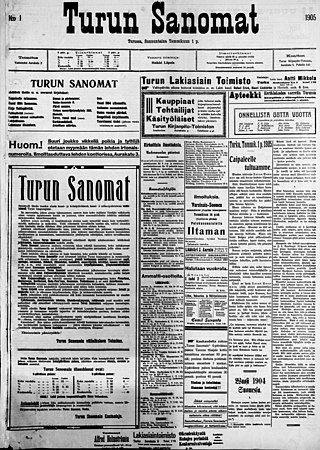
Turun Sanomat is the leading regional newspaper of the region of Southwest Finland. It is published in the region's capital, Turku and the third most widely read morning newspaper in Finland after Helsingin Sanomat and Aamulehti.

Turku Cemetery is a cemetery inaugurated in 1807 and located in Vasaramäki on the south-eastern outskirts of the city of Turku.

Turku Main Library is the chief branch of Turku City Library, located in the city centre of Turku, Finland. The library is approximately 8,500 m2.

The Blue and White Front was an ultranationalist political party in Finland which was founded in 2009 and dissolved in 2015.

Mein Schiff 3 is a cruise ship owned by TUI Cruises, and the first custom new build for the cruise line. She was delivered from STX Finland Turku Shipyard on 22 May 2014 and was followed by identical sister ships, Mein Schiff 4 in 2015, Mein Schiff 5 in 2016, Mein Schiff 6 in 2017. In addition, Mein Schiff 1 and Mein Schiff 2 were confirmed on 1 July 2015, with deliveries set for 2018 and 2019.
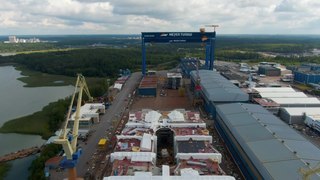
Perno shipyard is a shipyard in Turku, southwest Finland, that specialises in building cruise ships, passenger ferries, special vessels and offshore projects. The yard area is 144 hectares. The yard is operated by Meyer Turku Oy. The dry dock is 365 metres (1,198 ft) long, 80 metres (260 ft) wide and 10 metres (33 ft) deep, and equipped with two bridge cranes with capacities of 600 tonnes and 1,200 tonnes. The newer bridge crane with a capacity of 1,200 tonnes is the largest in the Nordic region.
Teemu Olavi Heino is a Finnish taekwondo practitioner, who competed in the men's heavyweight category. He claimed three medals in the over-84 kg category at the European Championships since 2002, and represented his nation Finland at the 2004 Summer Olympics. Throughout his sporting career, Heino trained full-time for Kokemäen Taekwondo Club in his native Kokemäki, under head coach and master Pia Aaltonen.

Meyer Turku Oy is a Finnish shipbuilding company located in Turku, Finland Proper. The company is fully owned by German shipbuilder Meyer Werft GmbH. The main products are cruise ships and cruiseferries.

The 2017 Turku attack took place on 18 August 2017 at around 16:02–16:05 (UTC+3) when 10 people were stabbed in central Turku, Southwest Finland. Two women were killed in the attack and eight people sustained injuries.
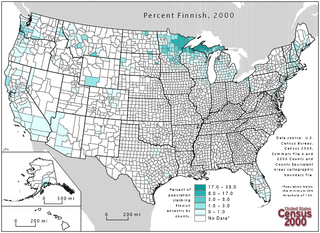
American Finnish, Fingliska or Fingelska is a form of the Finnish language spoken in North America. It has been heavily influenced by the English language. American Finnish was used actively until the 1950s and after that it has been declining, and Finnish Americans have been switching to English. Even some basic phrases like tätsrait 'that's right' were borrowed from English. The form of speech was studied by Pertti Virtaranta in 1960, and the first American Finnish dictionary was made in 1992. It has influence from English both in syntax and vocabulary. In 2013 Finnish was spoken by 26,000 people in their homes. In the town of Oulu, Wisconsin, there are documented third-generation speakers of American Finnish, and in Stanton Township, Michigan, there are children who speak the language. American Finnish has also retained loanwords from Swedish which modern Finnish lost.
Karelians, also known as Finnish Karelians or Karelian Finns, are a subgroup of the Finnish people, traditionally living in Finnish Karelia. Karelians speak eastern dialects of the Finnish language: the South Karelian dialects are spoken in South Karelia, while the eastern Savonian dialects are spoken in North Karelia. The South Karelian dialects were spoken in the Karelian Isthmus prior to the Winter War. Karelians are traditionally Lutheran Christians, with an Orthodox Christian minority, belonging to either the Evangelical Lutheran Church of Finland or the Orthodox Church of Finland respectively.
Enkeli-Elisa is the name used for the main character in a story written by Finnish author Minttu Vettenterä, which first spread on the Internet and as a self-published book titled Jonakin päivänä kaduttaa and thus spread through the media. The story is about a 15-year-old girl who was bullied at school and was claimed to have committed suicide. An organisation against school bullying was founded because of the story. The events in the story were presented as true events in many media, until the Helsingin Sanomat monthly supplement questioned the truthfulness of the events in July 2012 and the police started investigating the matter as a crime. During police interrogations, Vettenterä admitted that Elisa's parents were not real people, but, according to her, the story is based on real people and events.















